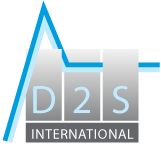Multiphysics
Most engineers evaluate their products against one physical phenomenon at a time, such as structural integrity, electromagnetics or thermal behavior. In reality, product performance usually depends on a number of physical phenomena interacting with each other – multiphysics. To achieve dependable, realistic simulation results that allow better design decisions, coupled simulations of the physical effects involved become necessary.
Hexagon’s (MSC Software) multiphysics solutions can accurately simulate the behavior of products simultaneously exposed to various loads, including forces, pressures, fluid flow, thermal, electro-static and electro-magnetic effects. Coupled multiphysics simulations deliver valuable insights into product performance and manufacturability helping to improve and optimize product designs.
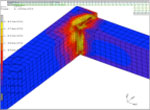
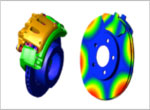
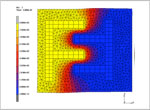
Thermal-Structural Modeling
Understanding the impact of thermal changes and structural responses is important to ensure quality and reliable long term operation for many products. Depending on the size of thermal changes and the materials involved, temperature changes can lead to warping with many unwanted consequences. For example, friction as applied in break systems creates heat in some areas of the disc structure and those temperature changes may lead to warping which may then be the cause of unwanted noise.
Hexagon’s (MSC Software) multiphysics solutions give designers the ability to optimize designs by exploring how to keep the brake disks or other structural elements as cool as possible or in general reduce temperature changes and their impact on structures.
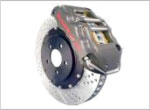
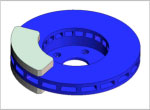
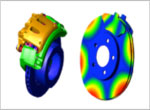
Thermal-Structural-Electromagnetic
The combination of thermal, structural and electrical effects is very important for the design of electro mechanical and especially MEMS (Micro-Electro-Mechanical-Systems) devices. MEMS sensors, actuators and structures are usually driven through electrostatic forces and their performance is influenced by thermal effects and material properties. Due to the size and transaction speed of MEMS devices, physical tests are difficult to perform and evaluation of different design concepts is expensive and time consuming.
Other common applications include pagers and cell phones, ultrasonic cleaners, motors and actuators. Similarly, principles of electromagnetic induction are applied in many devices like transformers, electrical generators, contactless batteries, induction cooking and several others.
Multiphysics solutions from Hexagon (MSC Software) allow efficient creation of virtual prototypes and coupled simulation of the physics these devices are exposed to. They allow electrical system and electronic component designers investigate different concepts and once the final concept is chosen, to optimize the design for reliability and manufacturability.
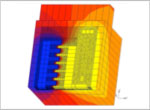

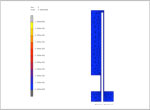
Fluid-Structure-Thermal Analysis
Fluids, both liquids and gases, apply pressure and thermal loads on structures. In many cases, the structural response to these loads will alter the initial conditions of flow and temperature.
Hexagon’s (MSC Software) multiphysics solutions support product development in delivering vital insight into how structures response to pressure and temperature changes and how these responses in turn influence the fluid flow. Better understanding of product behavior not only allows the design of reliably performing products but also to ensure that pressure or temperature limits will not be violated.
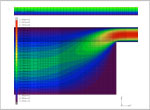
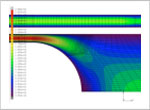
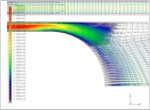
Acoustic-Structural
Noise and Vibration engineers strive to minimize structure-borne (e.g. engine and transmission noise) and air-borne noise (e.g. wind noise) of a vehicle without adversely affecting the overall system performance. Hexagon’s (MSC Software) solutions enable you to analyze and optimize interior and exterior acoustics of a vehicle or any other system. Use of infinite elements to define the exterior domain helps save resources and time in modeling open spaces.
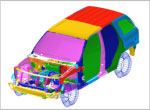
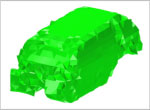
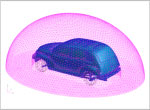
-
Aerospace & Defense: Airframe manufacturing, Engine hot/cold blade shapes, Fuel tank sloshing, Cabin acoustics, Projectile launching, satellites
-
Automotive: Break squeal, Engine thermal load cycling, Airbag deployment, Formed parts, Tire/Road contact, Hydroplaning, Fuel tank sloshing, Interior and exterior acoustics of vehicles, Mufflers, Backlight de-icing
-
Consumer Products / Packaging: Glass forming, Thermal forming, Extrusions, Blow molding, Hotfilling, Analysis of fluid filled bottles, thermos, cooking utensils and stove
-
Electronics: Electrical-Thermal-Mechanical Micro-Actuator, MEMS Devices, Soldering, PCB cooling, Ultrasonic motor, Structural Solenoid Actuator
-
Energy: Cooling pipes, Transformers, Joule heating, Electrical laminations, Capacitor, Switches, Circuit breakers
-
Government: Highway acoustic barriers, Explosion and safety of structures, Accident investigation
-
Heavy Equipment and Machinery: Acoustic and vibration analysis, Composite and elastomer curing, furnace
-
Medical: Blood flow analysis, Fluid bags, Laser welding, heart and other muscles, defibrillators, pacemaker
-
Shipbuilding and Transportation: Liquid transportation and sloshing, accident investigation, underwater explosion, arc welding, sonar, cabin noise control, exterior acoustics
Request information
D2S International offers consultancy services using finite element software from HEXAGON (MSC Software).
